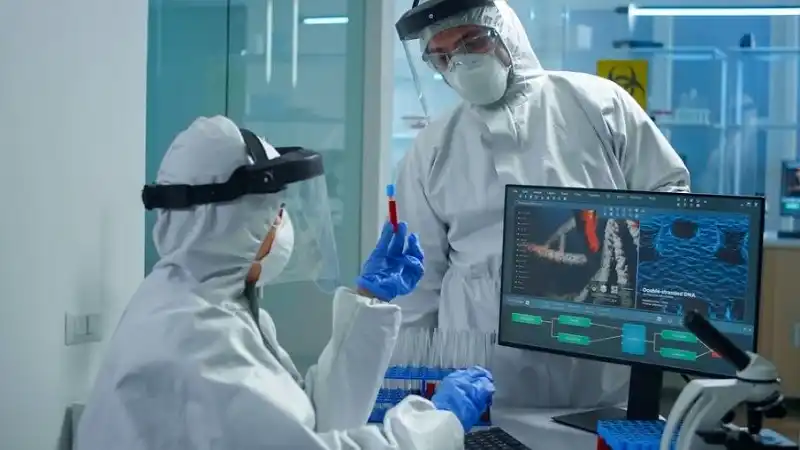Pharmaceutical production requires meticulous attention to cleanliness and precision. Products that reach patients must be free from contamination, making cleanroom practices not just recommended, but essential.
For quality control experts and pharmaceutical professionals, understanding these practices is key to maintaining product integrity and ensuring patient safety. This blog post explores critical cleanroom practices that can make a significant difference in pharmaceutical manufacturing.
Understanding the Importance of Cleanrooms
Cleanrooms are controlled environments where pollutants like dust, airborne microbes, and aerosol particles are minimized. The importance of cleanrooms in pharmaceuticals cannot be overstated—they ensure that products are manufactured in a sterile setting, reducing the risk of contamination. For quality control experts, these spaces are crucial in validating that every batch meets strict regulatory standards.
Within a cleanroom, the air filtration system plays a pivotal role. High-efficiency particulate Air (HEPA) filters remove contaminants from the air, maintaining an environment that supports safe pharmaceutical production. It’s vital for professionals to regularly monitor these systems to ensure they function correctly. Regular maintenance and validation of these filters are indispensable to minimize the risk of contamination.
Cleanrooms also provide a controlled environment for handling sensitive materials. For pharmaceutical professionals, understanding how to operate within these standards is essential. This includes proper gowning procedures, movement protocols, and equipment handling, all designed to maintain the integrity of the cleanroom environment.
Key Elements of Cleanroom Protocols
To maintain the sterile environment of a clean room, strict protocols must be followed. These protocols are designed to limit the entry and spread of contaminants. One of the fundamental aspects is the gowning procedure. Personnel must don specific attire, including coveralls, gloves, masks, and shoe covers, to prevent introducing contaminants into the cleanroom.
Another critical element is the regular cleaning and sanitization of surfaces. This ensures that any potential contaminants are removed before they can impact the production process. Pharmaceutical professionals must be trained in proper cleaning techniques, using approved disinfectants that are effective against a wide range of microbial threats.
Additionally, maintaining cleanroom pressure differentials is crucial. This involves controlling the air pressure within the cleanroom to ensure that air flows out rather than in, which minimizes the risk of outside contaminants entering the space. Monitoring these pressure levels is part of a broader commitment to maintaining a controlled environment conducive to pharmaceutical production.
The Rol4e of Contamination Control Specialists
Contamination control specialists are a vital part of the pharmaceutical production process. These professionals possess specialized knowledge in identifying potential contamination sources and implementing strategies to mitigate these risks. Their expertise is invaluable in maintaining the integrity of cleanrooms, especially in complex pharmaceutical environments.
These specialists play a key role in developing and updating cleanroom protocols. By analyzing data and trends, they can recommend improvements to existing procedures, ensuring that cleanrooms remain compliant with the latest industry standards. This continuous improvement process is essential in adapting to new challenges and maintaining high standards of cleanliness.
In addition to protocol development, contamination control specialists are involved in training programs. By educating pharmaceutical professionals on best practices, they help foster a culture of awareness and responsibility. This proactive approach to contamination control is vital in maintaining the safety and efficacy of pharmaceutical products.
Best Practices for Cleanroom Equipment Handling
Proper handling of equipment is a crucial aspect of cleanroom practices. Pharmaceutical professionals must be well-versed in techniques that prevent contamination during equipment usage. This includes understanding how to sterilize equipment before it enters the cleanroom and ensuring it remains sterile throughout its use.
One effective practice is the use of dedicated equipment for cleanrooms. This reduces the risk of cross-contamination and ensures that each piece of equipment is specifically suited for the cleanroom environment. Regular maintenance and calibration of this equipment are also important to ensure it operates at peak performance, minimizing the risk of product contamination.
It’s also essential to have protocols for the safe disposal of waste and used materials. Proper disposal methods prevent the introduction of contaminants back into the cleanroom, maintaining a sterile environment. By following these best practices, pharmaceutical professionals can ensure that their equipment handling procedures support the overall cleanliness and safety of their production processes.
Ensuring Compliance with Regulatory Standards
Compliance with regulatory standards is non-negotiable in pharmaceutical production. Cleanrooms must meet stringent regulations set by bodies such as the FDA and EMA. These standards are designed to protect consumers by ensuring that pharmaceutical products are manufactured in a safe and sterile environment.
Quality control experts must be diligent in documenting all cleanroom activities. This documentation provides a record of compliance with regulatory requirements and is essential during audits. By maintaining thorough records, pharmaceutical companies can demonstrate their commitment to producing safe and effective products.
Staying informed about updates to regulatory standards is also critical. The pharmaceutical industry is dynamic, with changes in regulations reflecting new scientific insights and technological advancements. By staying current, pharmaceutical professionals can ensure that their cleanroom practices remain compliant and effective in minimizing contamination risks.
Mastering cleanroom practices is essential for quality control experts and pharmaceutical professionals committed to producing safe, effective products.
By following established protocols, leveraging the expertise of contamination control specialists, and ensuring compliance with regulatory standards, these professionals can maintain the integrity of their production processes.
For those seeking to enhance their cleanroom operations, ongoing education and continuous improvement are key. By prioritizing these practices, pharmaceutical companies can ensure that their products meet the highest standards of quality and safety.



